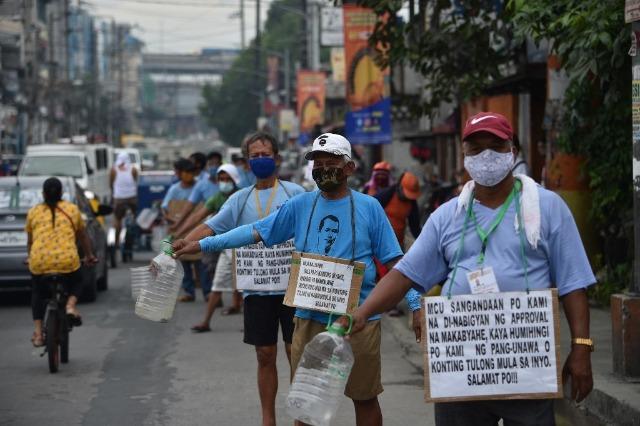Philippine officials see economic rebound to pre-pandemic levels

The Philippines' economic managers are optimistic that the country, home to the longest lockdown in the world, will see growth bounce back to pre-pandemic levels in 2021 after a record economic contraction this year due to the coronavirus disease 2019 (COVID-19).
This year, the government sees the local economy contracting by 8.5% to 9.5%, the worst performance on record. In the third quarter of the year, the gross domestic product (GDP) fell by 10%.
The latest outlook is a deeper contraction than the earlier projection of the Development Budget Coordination Committee (DBCC) of -2.0% to -3.4% in May.
The economy shrank by 0.7% in the first quarter of the year, 16.9% in the second quarter, and 11.5% in the third quarter.
"Despite a lower projection than what was initially adopted back in July 2020, further relaxation of restrictions, as we have improved our healthcare system capacity, will keep our economy on the right track towards full recovery. Thus, GDP growth is projected to bounce back to reach 6.5 to 7.5 percent in 2021 and 8 to 10 percent in 2022," the DBCC said.
"We are also expecting further improvement in our fourth quarter GDP numbers. As we carefully and proactively manage the risks, a strong economic recovery and solid growth remains within our reach," it added.
Sought for comment, Rizal Commercial Banking Corporation (RCBC) chief economist Michael Ricafort said that the timely approval of the P4.5-trillion 2021 will be a major catalyst for faster economic recovery, as it is seen to expedite government spending, especially on infrastructure.
Earlier this week President Rodrigo Duterte signed into law the P4.5-trillion 2021, the first budget to carry provisions to finance efforts against the COVID-19 pandemic.
The possible relaxation of general community quarantine (GCQ) in Metro Manila to a modified GCQ in early next year will further re-open the economy and allow increased operating capacity for more businesses, leading to more employment and more tax revenue collections.
Economic recovery could also accelerate shortly before or during the 2022 election year, which will be as early as the latter part of 2021 as government spending, such as on infrastructure, will be fast-tracked few months before the election ban since incumbent elected officials rush to complete projects, according to Ricafort.
Below are the latest projections of other economists and multilateral lenders for both 2020 and 2021, as of December 30, 2020:
Asian Development Bank (ADB)
The GDP forecast for 2020 is downgraded to an 8.5-percent contraction because household consumption and investment have fallen more than expected.
The forecast for 2021 is maintained at 6.5-percent growth, assuming that public investment picks up and the global economy recovers.
Fitch Solutions
We at Fitch Solutions believe the Philippine economy will struggle to maintain its recovery momentum in Q420 as domestic containment measures weigh on activity and demand.
In 2021, base effects and supportive fiscal and monetary policy stances should drive a rebound, with the economy returning to pre-pandemic levels by mid-2022.
International Monetary Fund (IMF)
During May and June, as many economies tentatively reopened from the Great Lockdown, the global economy started to climb from the depths to which it had plunged in April. But with the pandemic spreading and accelerating in places, many countries slowed reopening, and some are reinstating partial lockdowns.
S&P Global
We keep our GDP (gross domestic product) growth forecast for this year and next unchanged. As before, the base-effect-driven high growth rates for the upcoming years mask the fact that the level of GDP will remain far below the pre-Covid (coronavirus disease 2019) trend even by the end of our forecast horizon.
World Bank
The multiple shocks that hit the Philippines—the COVID-19 health crisis, economic activities across the country frozen by quarantine measures, devastating typhoons in November, and the global recession—will likely shrink the economy by 8.1 percent in 2020, temporarily reversing gains made in poverty reduction in recent years. Sustained improvements in managing the pandemic and a possible rebound in the global economy, however, can help the country recover in 2021 and 2022. — Ted Cordero and Jon Viktor D. Cabuenas/BM, GMA News

Need a wellness break? Sign up for The Boost!
Stay up-to-date with the latest health and wellness reads.
Please enter a valid email address
Your email is safe with us





